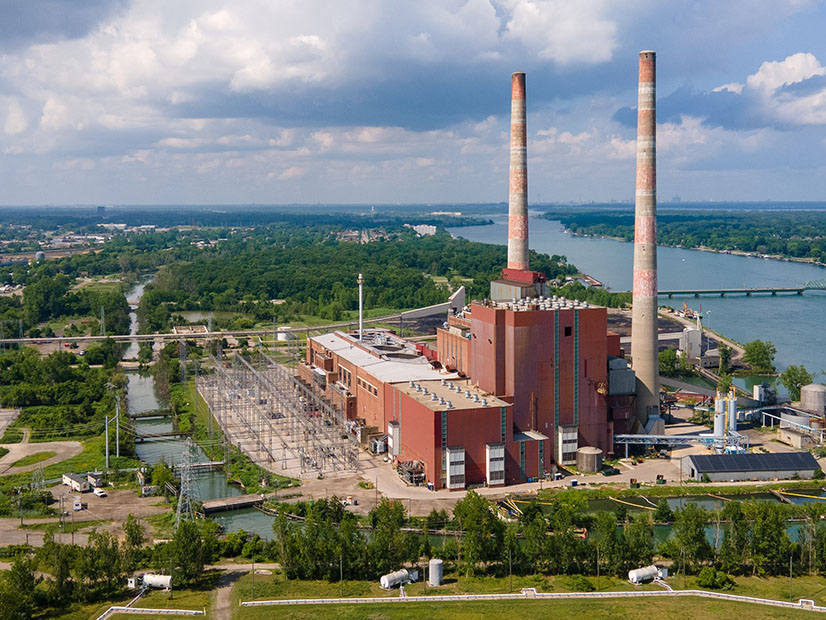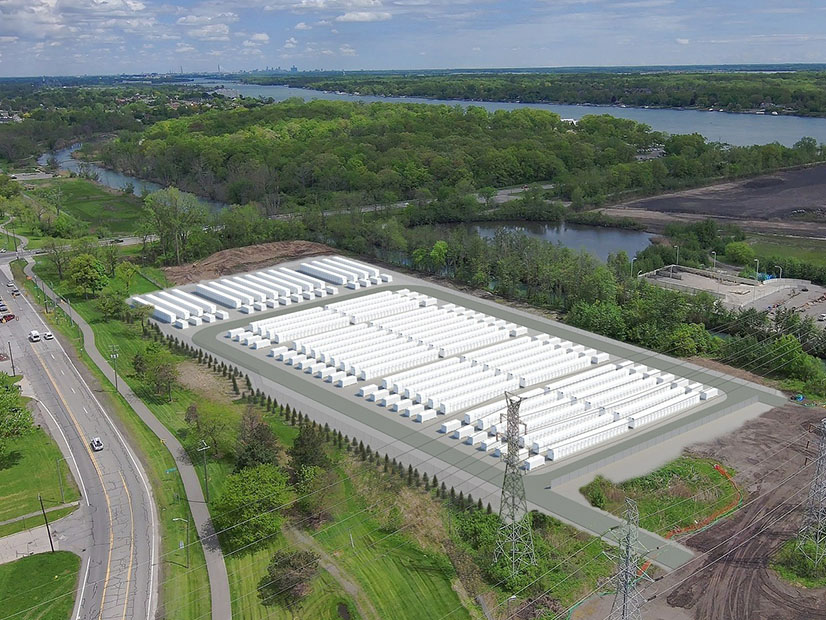DTE Energy said it will build a large battery energy storage system on the site of a coal-fired plant it is demolishing near Detroit.
With a capacity of 220 MW and 880 MWh, the Trenton Channel Energy Center is expected to be the largest standalone battery storage site in the Great Lakes region when completed in 2026.
Company officials said the project will bring the state closer to the MI Healthy Climate Plan goals outlined by Michigan Gov. Gretchen Whitmer (D), who joined them for a ceremonial groundbreaking at the riverfront site June 10.
“DTE’s new Trenton Channel Energy Center will help us strengthen our grid and produce more clean power when it’s less costly and store it for later when we need it,” she said in a prepared statement.
DTE CEO Jerry Norcia said in a news release the new battery facility will support the utility’s CleanVision Integrated Resource Plan and help move the state closer to its energy storage target. It is the largest of several energy storage projects DTE has in development.
Public Act 235 sets a goal of 2.5 GW of storage installed by 2030.
DTE said the Inflation Reduction Act is providing an important financial boost for the Trenton Channel project — $140 million in tax incentives.
The original Trenton Channel Power Plant dated to 1924, and a companion plant running at higher steam conditions was built in 1950. The “low-side” plant was decommissioned in the 1970s, and its boiler house was demolished.
The “high-side” plant remained in operation, but in later years, activists and regulators targeted it because of its emissions.
Its last operational generating unit was retired in 2022. The Sierra Club framed the retirement of Trenton Channel (and the St. Clair and River Rouge coal plants) as the result of a Clean Air Act enforcement case; DTE framed them as a long-planned part of its net-zero initiative, which includes the phaseout of coal by 2032. (See DTE, Activists Announce Agreement to Exit Coal by 2032.)
DTE’s annual fuel mix report compares its own statistics with the five-state regional average and shows mixed results for 2022, the last year in which Trenton Channel and St. Clair were fired up.
DTE has relied on coal for 54.16% of its generation vs. 41.8% for the region; its nitrogen oxide emissions per MWh of power generated were 50% higher than the region, and its sulfur dioxide emissions per MWh were 128% higher.
But DTE also generated 13.1% of its electricity with renewable sources — mostly wind — compared with a regional average of just 6.8%. DTE’s carbon dioxide emissions per MWh were 13.5% higher than the regional average.
Demolition of the Trenton Channel Power Plant has begun.
The dual 563-foot smokestacks — local landmarks known as The Witches’ Socks or The Candy Canes for their red and white bands — were brought down with explosives March 15, and the boiler house is scheduled to meet the same fate at sunrise June 21.
The plant was not only a landmark for generations of area residents, but also a literal and figurative powerhouse for the area’s economy, with a nameplate capacity as high as 1,060 MW, plus a sizeable workforce and local tax impact.
DTE said the battery plant will generate tax revenue for the community to continue the coal plant’s legacy.




